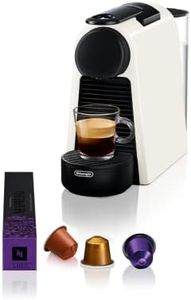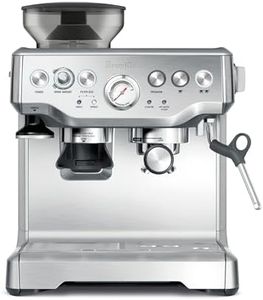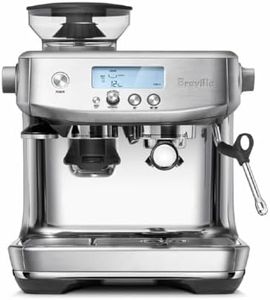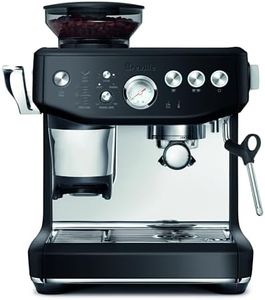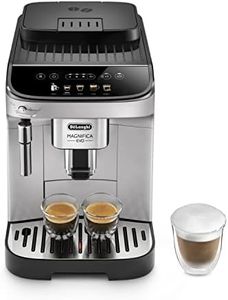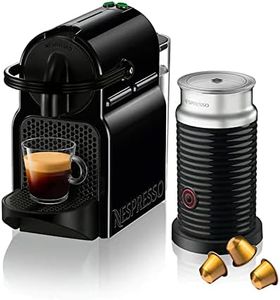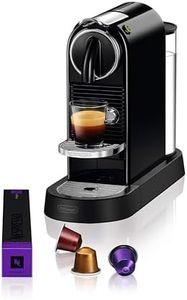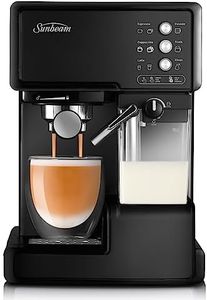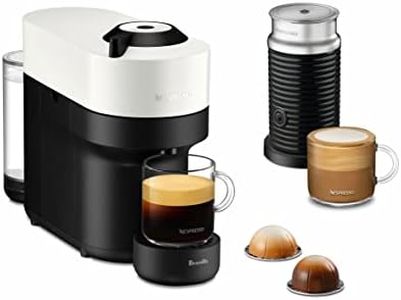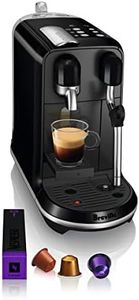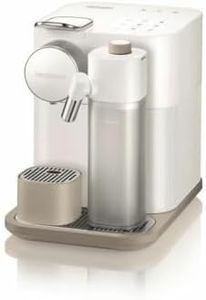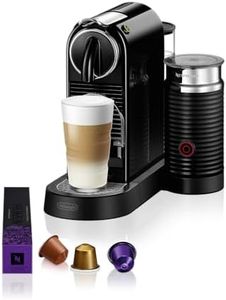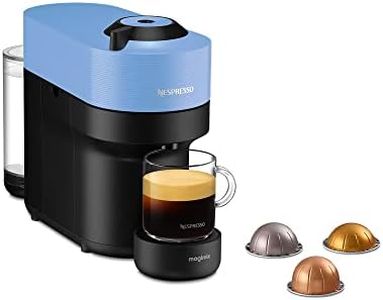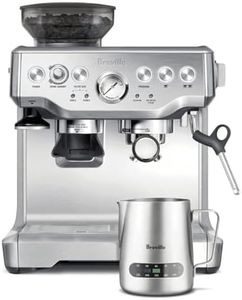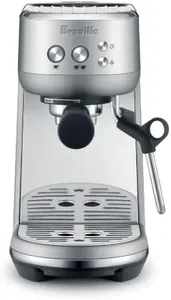We Use CookiesWe use cookies to enhance the security, performance,
functionality and for analytical and promotional activities. By continuing to browse this site you
are agreeing to our privacy policy
10 Best Cheap Espresso Machines
From leading brands and best sellers available on the web.Buying Guide for the Best Cheap Espresso Machines
Choosing a cheap espresso machine is all about finding the right balance between convenience, quality of coffee, and ease of use. With many affordable options available, it's important to focus on the features that matter most for your daily coffee enjoyment. You don’t have to be a skilled barista to make tasty espresso at home, but understanding what to look for can help you avoid common pitfalls and pick a machine that's just right for your kitchen and lifestyle.Type of Espresso MachineEspresso machines usually come in manual, semi-automatic, or fully automatic types. This spec refers to how much work the machine does for you. Manual machines require you to do everything from grinding and tamping the coffee to controlling the pressure, which can be time-consuming for beginners. Semi-automatic models are the most popular for home users, as they automate parts of the process like water flow but let you control others, like grinding and tamping. Fully automatic machines do almost everything at the push of a button but may offer less personalization. If you want hands-on control and are willing to learn, choose manual or semi-automatic; for quick, consistent results, go automatic.
Pressure (Bars)Pressure is measured in 'bars' and determines how forcefully the water is pushed through the coffee grounds to make the espresso. Good espresso is typically brewed at around 9 bars, but machines often advertise anything from 9 to 20 bars. A minimum of 9 bars is needed for proper extraction, but higher numbers don't always mean better quality. Lower-end machines may not reach consistent pressure. For most users, a machine that reliably reaches around 9 bars is sufficient, especially if you’re learning the ropes or want something low-maintenance.
Boiler TypeBoiler type influences how quickly the machine heats up and how stable it keeps the water temperature. The common types are single boiler, thermoblock, and dual boiler. Single boilers can only make espresso or steam milk at one time, so you'll have to wait between brewing and steaming. Thermoblocks heat water on demand, making the machine heat up faster and easier to maintain. Dual boilers are rare in cheap machines but allow simultaneous brewing and steaming for faster drinks. If you usually make one or two drinks at a time and don't mind waiting a minute or two to steam milk, a single boiler or thermoblock is a practical choice.
Milk FrothingMilk frothing ability affects whether you can make cappuccinos or lattes at home. Cheaper machines might have simple steam wands, some have automated frothers, and a few lack it altogether. A manual steam wand requires a bit of practice to get the foam right, while automatic frothers are easier but offer less control. If you're mostly making espresso shots, this spec may not matter to you. If you love milk-based drinks, pick a machine with a steam wand, and consider whether you’re willing to learn or prefer one-touch frothing.
Ease of CleaningCleaning is crucial for maintaining taste and machine health. Cheaper machines might have fewer removable parts, making them trickier to keep clean. Look for machines with removable drip trays, water tanks, and simple brewing mechanisms. Simpler designs can be easier to wipe down and maintain. If you want low effort, pick a design with the least number of small parts and straightforward access to all components.
Water Tank CapacityWater tank capacity determines how many espressos you can make before refilling. Smaller tanks need refilling more often, which might be inconvenient if you make multiple cups per day. Standard capacities range from a few cups (about 1 liter) to more for larger tanks. If you only make one or two drinks at a time, a small tank is fine. If you expect to serve several people, consider a larger tank to avoid frequent refills.
